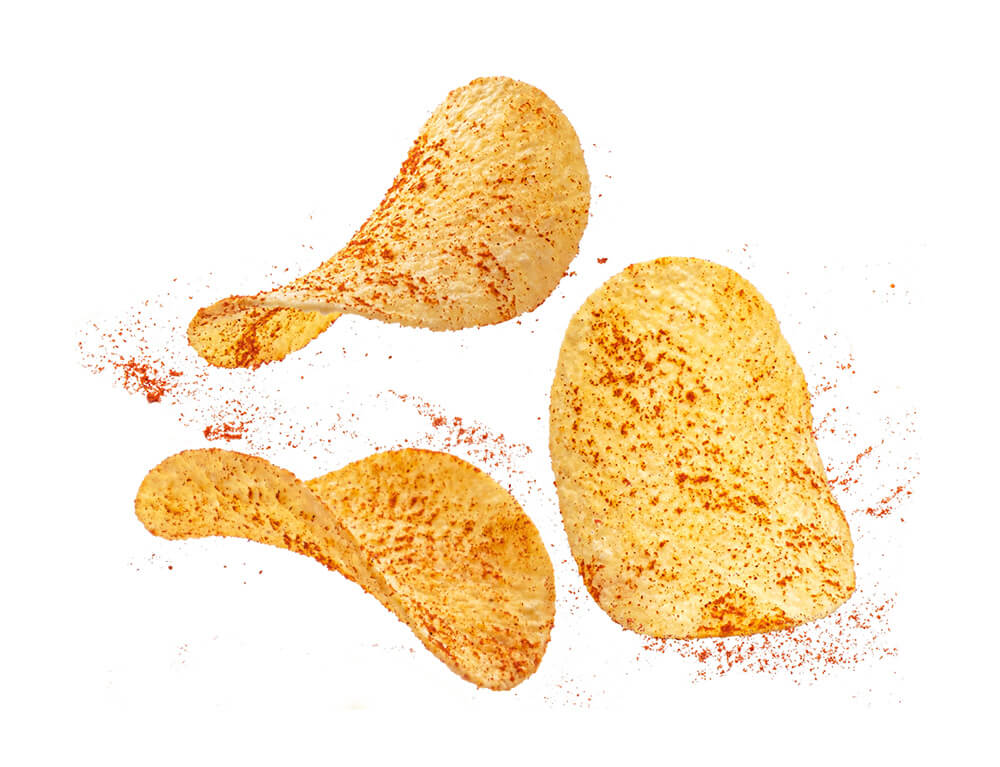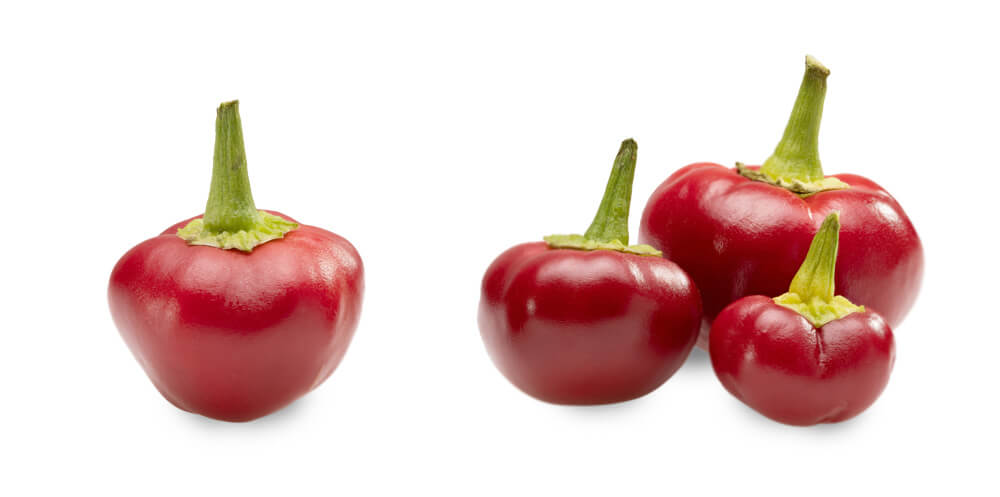featuring
PAPRIKA
If you're a fan of Spanish Chorizo, and perhaps the Hungarian Goulash, then you're probably an even bigger fan of the spice that gives life to these: paprika. Paprika is often associated with an earthy, smoky, and sometimes spicy flavor profile—but there is much more to paprika and its varieties that will have you reaching for this spice more and more.
Paprika is valued for both its color and flavor—and different cuisines will use it differently to lean into one or both of those elements. Several Spanish recipes will have you adding it towards the end of cooking, for a defined punch of flavor. Certain Hungarian dishes add heaping spoons at the beginning of cooking, allowing the color and flavor to permeate the dish. Of course, a key to these cooking preferences also lies in the vast differences in the types of paprika.
Personally, paprika is one of my favorite spices after having experienced its versatility in snacks and dishes around the world. Going out for paprika-infused Spanish tapas or a paella is my ultimate date night idea. Growing up in Germany, my husband informs me that paprika-flavored chips were the standard (much like salt is perhaps the standard here in the States). I was initially skeptical, but after tasting an imported bag from Germany, I now dust chips, popcorn, and other snacks with paprika for a delicious touch!

*This article is by food blogger and Selefina creator Rena Sak (A Girl and a Spoon). At Selefina, we believe that cooking should be about exploring and experimenting with new ingredients. We hope having our creators share what they've learned about a spice will inspire others to go on their own journey.
PUTTING THINGS MILDLY
Paprika is often considered a pretty mild spice, which may be surprising as it comes from the chili pepper—or botanically, the Capsicum Annuum. As there are so many varieties of chili peppers, there are also many varieties of the resulting paprika spice, which may include a blend of peppers or a singular type.
The chili pepper plant is an herbaceous perennial plant in the nightshade family (which includes tomatoes, eggplants, and tobacco!). The plant thrives in warm, dry climates and is native to the Americas. Processing chili peppers for paprika, however, is primarily completed in Hungary and Spain.
The fruits of the plant, i.e. the "peppers," are harvested in summer when they are ripe and red before being dried and then ground. For smoked paprika, the peppers are typically hung in smokehouses before processing.
You may be wondering: if paprika comes from the chili plant, why isn't it as spicy as, say, a jalapeño? The heat-carrying capsaicin molecules of the chili fruit lie in the white pith, with heat levels dependent on the plant variety. For example, a bell pepper is much more mild than a jalapeño, even though they come from the same species. These varietal nuances, and the processing of the peppers, determine the heat and flavor of paprika. Good-quality paprikas will have had the pith, bitter stems, and seeds removed whereas lower-quality ones may include the whole fruit.

Another cool fact: paprika is also a super source of Vitamin C. Pound for pound, it has more Vitamin C than citrus fruit. In fact, Hungarian chemist Albert Szent-György won the Nobel Prize in 1937 for his discoveries relating to Vitamin C. During his research, he had used up his Vitamin C stash extracted from adrenal glands - and attempts to extract enough from citrus fruits and vegetables failed. So, he considered testing paprika for its Vitamin C content. After all, he was chair of the medical chemistry department at the University of Szeged—and Szeged is one of the paprika capitals of Hungary.
PACK UP, PAPRIKA
Recently discovered cave drawings in Mexico suggest that capsicum peppers were eaten as far back as 7000 BCE, but it's likely their consumption goes back even further to the Presclassic periods. Residues from capsicum were found on pottery samples excavated in southern Mexico dating back to 400 BCE—along with residues of cacao!
The stories of how the peppers made their way to Europe are conflicting, but a famous Spanish legend attributes the initial journeys to Christopher Columbus in the late 15th century. It's possible the seeds were even gifted to King Ferdinand. Another legend claims that Spanish monks may have brought them back from the Americas to Spain after mission trips. Either way, the custom of smoking paprika appears to have begun there, where the peppers were smoked over oak fires.
The Ottoman Turks later introduced the peppers to Hungary in the late 16th century, and the sunny southern climate was well-suited for growing them. Although the spicy peppers were initially used as castle ornaments, paprika was adopted as the national spice by the mid-1800s. Innovations by local farmers resulted in more efficient processing techniques and different breeds of peppers, particularly a milder version from Szeged, which fueled its popularity.
Hungary is so recognized for its efficient techniques, that growers in other countries like Africa and China ship their peppers to Hungary for processing.
PUCKER UP
There are two main types of paprika: Hungarian and Spanish. The flavor profile is very different between the two, and substituting one for the other will change the taste of the dish—especially if you use larger amounts. A milder paprika can be used to add more color than flavor to your dish.
CAUTION: Paprika burns easily and can become bitter, especially if you use an already-smoked variety. When cooking on high heat, be brief.
Hungarian paprika is typically bright or rust-colored and usually gives off fruity notes. There are many grades and types of this paprika, ranging in mildness, pungency, color, and aroma. Our különleges grade, or "special" quality is a vibrant orange-red and very finely ground. It is delicious in slow-cooked stews or sauces when added in abundance early on.
-
Get Creative with Hungarian Paprika
- Add a teaspoon or so to the fat or oil of a stew or soup base near the beginning of cooking—but after the aromatics (e.g. onion/garlic). Abundance is encouraged for strong flavor and color.
- Make a warm sauce, such as a paprika-plum sauce, or add to a gravy for chicken or turkey
- Play around with a creamy Paprikash sauce recipe, pairing it with different proteins (or none!)
- Add paprika to your table next to your salt and pepper!
Spanish paprika aka Pimentón, is often darker and will also have sweeter notes with a touch of smokiness, even when unsmoked. The chosen mix of peppers used will yield one of three types: dulce (sweet), agridulce (bittersweet) or picante (hot).
-
Get Creative with Spanish Paprika
- Make your own all-purpose spice blend or rub with Spanish paprika as the base
- Use as a main flavor for a rice dish like paella, or add a twist to the West African Jollof rice or Mexican rice
- Add into the batter for fried chicken or fried calamari
- Serve roasted or fried vegetables with a smoked paprika aioli or fresh herb and paprika dipping sauce (Tip: French fries topped with aioli and paprika are amazing!)
- Dust snacks such as salted chips, popcorn, nuts, or crispy chickpeas
-
For more...
- Earthiness/smokiness add black cardamom, toasted sesame or chipotle pepper
- Sweetness/fruitiness add cinnamon or allspice; try guajillo pepper (my favorite)
- Freshness add cardamom or coriander
- Buttery and fatty notes add cacao or saffron
- Citrus notes add coriander or sumac
AVAILABLE
AVAILABLE
AVAILABLE
Paprika is truly a versatile spice, in that its many varieties offer countless pairing opportunities. I enjoy it so much that I created my own spice blend based on it: Iberian Infusion. I particularly enjoy paprika with potatoes, and one of my favorite dishes is the Spanish tapa Patatas Bravas - with plenty of paprika! Prized in the Americas and the Caribbean to Europe and the Middle East, paprika truly is a special spice. I highly recommend everyone keep multiple varieties. If you don't know where to start - try my favorite, smoked paprika from the La Vera Valley. Or, if you prefer something mild, Hungarian paprika is always a great place to start. — Rena Sak
